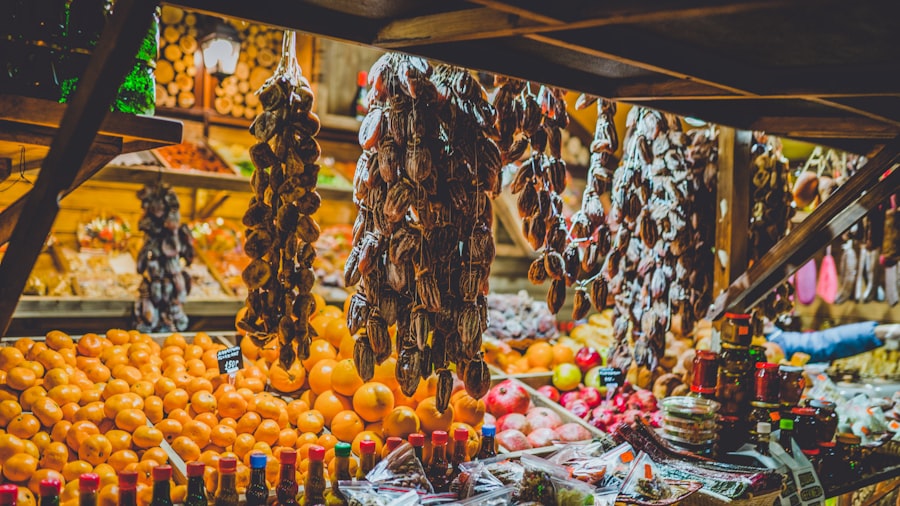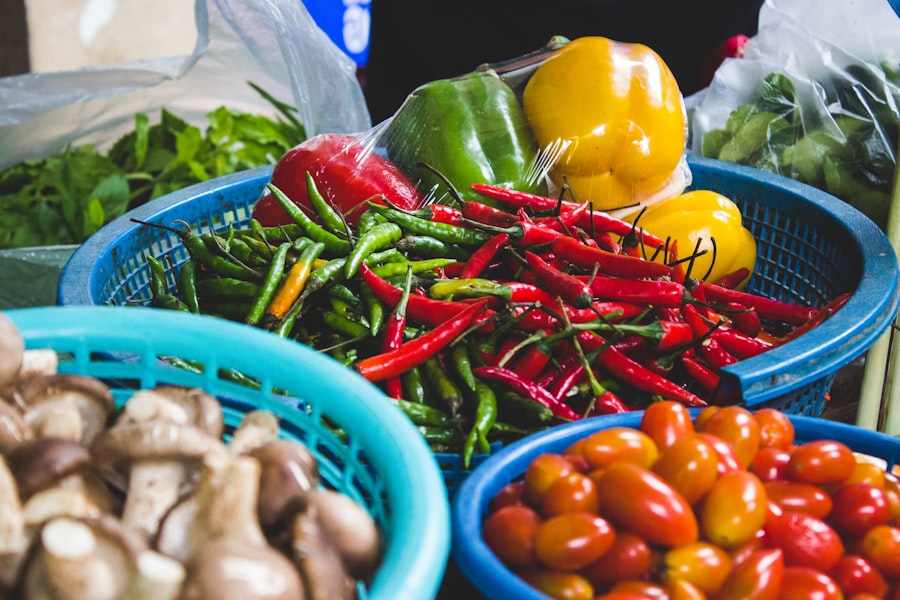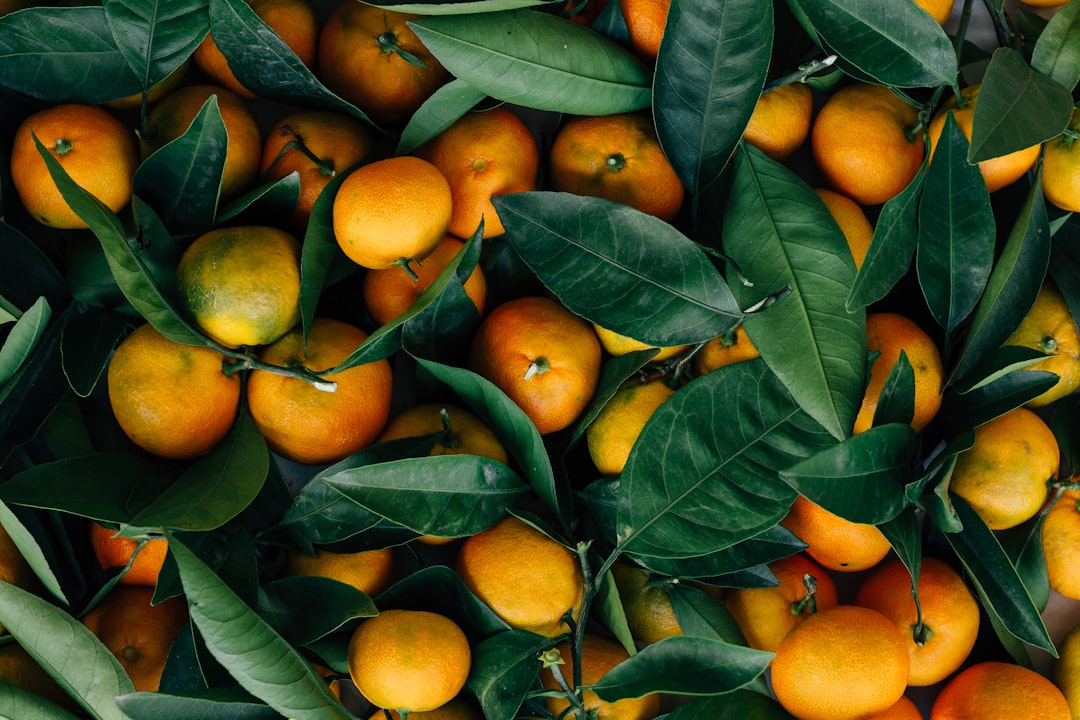In recent years, food fairs have surged in popularity, transforming from niche gatherings into vibrant cultural phenomena that attract thousands of visitors. This rise can be attributed to several factors, including the growing interest in culinary arts, the desire for unique dining experiences, and the increasing emphasis on local and sustainable food sources. Food fairs provide a platform for chefs, home cooks, and food artisans to showcase their creations, allowing attendees to explore a diverse array of flavors and culinary techniques.
As urban areas become more populated and food culture evolves, these events have become essential in connecting communities through shared gastronomic experiences. The evolution of food fairs has also been influenced by social media, which has played a pivotal role in promoting these events. Platforms like Instagram and TikTok have allowed food enthusiasts to share their experiences in real-time, creating a buzz that draws larger crowds.
The visual appeal of beautifully plated dishes and the excitement of discovering new flavors have made food fairs a must-visit for foodies and casual diners alike. As a result, cities around the world are now hosting annual food festivals that celebrate local ingredients, culinary traditions, and innovative cooking methods, further solidifying the role of food fairs in contemporary culture.
Key Takeaways
- Food fairs have risen in popularity as a way to explore culinary delights and support local vendors.
- Food fairs offer a diverse range of cuisines, showcasing global flavors and culinary innovations.
- The art of food presentation is a key aspect of food fairs, adding to the sensory experience.
- Food fairs play a significant role in promoting local cuisine and impacting food trends.
- Attending food fairs provides a social experience and an opportunity to explore new flavors and support local vendors.
A Feast for the Senses: Exploring Culinary Delights
Food fairs are not merely about eating; they are immersive experiences that engage all five senses. The aroma of sizzling meats, the vibrant colors of fresh produce, the sound of laughter and conversation, the texture of artisanal bread, and the taste of unique flavor combinations all come together to create a sensory feast. Each stall at a food fair tells a story through its offerings, inviting attendees to embark on a culinary journey that transcends geographical boundaries.
For instance, one might find a stall serving spicy Thai street food next to another offering delicate French pastries, showcasing the rich tapestry of global cuisine. The experience is further enhanced by interactive elements such as cooking demonstrations and tastings. Chefs often take center stage, showcasing their skills while sharing tips and tricks with eager audiences.
This not only educates attendees about different cooking techniques but also fosters a deeper appreciation for the culinary arts. The opportunity to sample dishes before purchasing allows visitors to explore new flavors without commitment, encouraging adventurous eating and expanding palates. In this way, food fairs serve as both a celebration of culinary creativity and an educational platform for those eager to learn more about the art of cooking.
The Diversity of Food Fairs

Food fairs come in various forms, each reflecting the unique culinary landscape of its location. From large-scale international festivals that feature cuisines from around the globe to smaller community events that highlight local specialties, the diversity is staggering. For example, the Smorgasburg in Brooklyn, New York, is renowned for its eclectic mix of food vendors offering everything from gourmet doughnuts to artisanal ramen.
In contrast, the San Francisco Street Food Festival focuses on local vendors who serve up beloved regional dishes, emphasizing the importance of community and local culture. Moreover, food fairs often cater to specific themes or dietary preferences, such as vegan festivals or events celebrating ethnic cuisines. These specialized fairs not only provide a platform for niche markets but also promote inclusivity within the culinary world.
By showcasing diverse culinary traditions and dietary options, food fairs encourage attendees to explore new tastes while fostering an appreciation for different cultures. This diversity enriches the overall experience and highlights the importance of food as a universal language that brings people together.
The Art of Food Presentation
| Aspect | Metric |
|---|---|
| Color | Use of vibrant and contrasting colors |
| Balance | Arrangement of elements for visual equilibrium |
| Proportion | Ensuring proper ratio of different food items |
| Texture | Incorporating variety of textures for visual interest |
| Plating Techniques | Use of different plating styles such as stacking, layering, or fanning |
One cannot underestimate the significance of presentation in the culinary world, especially at food fairs where visual appeal can be just as important as taste. Vendors often go to great lengths to create eye-catching displays that entice passersby. The arrangement of ingredients, the choice of serving vessels, and even the garnishes used can elevate a dish from ordinary to extraordinary.
For instance, a simple bowl of ramen can be transformed into a work of art with vibrant toppings like pickled vegetables, soft-boiled eggs, and delicate microgreens arranged thoughtfully on top. The art of food presentation extends beyond aesthetics; it also plays a crucial role in enhancing the overall dining experience. When dishes are presented beautifully, they evoke excitement and anticipation in diners.
This psychological aspect can significantly influence how people perceive flavors and textures. At food fairs, where competition for attention is fierce, vendors who master the art of presentation often find greater success in attracting customers. This emphasis on visual appeal has led to trends such as “Instagrammable” foods—dishes designed specifically to be photographed and shared on social media platforms.
The Role of Food Fairs in Promoting Local Cuisine
Food fairs serve as vital platforms for promoting local cuisine and preserving culinary heritage. By showcasing traditional dishes and regional specialties, these events help educate attendees about the cultural significance behind each dish. For example, at a food fair in New Orleans, visitors might encounter gumbo stalls alongside vendors selling beignets—both staples of Creole cuisine that reflect the city’s rich history and diverse influences.
Such events not only celebrate local flavors but also encourage pride in regional culinary traditions. Moreover, food fairs often provide opportunities for local chefs and home cooks to gain exposure and build their brands. Many small-scale vendors rely on these events as a primary means of reaching new customers and establishing their presence in the culinary scene.
By supporting local businesses through food fairs, attendees contribute to the sustainability of their communities while enjoying authentic flavors that might otherwise be overlooked in larger commercial settings. This symbiotic relationship between vendors and attendees fosters a sense of community and shared identity centered around food.
Exploring Global Flavors at Food Fairs

While local cuisine takes center stage at many food fairs, these events also offer an opportunity to explore global flavors that might not be readily available in one’s hometown. International food fairs often feature vendors from various countries who bring their traditional dishes to new audiences. For instance, at an international food festival in Toronto, attendees can sample everything from Ethiopian injera to Japanese takoyaki—all within a single afternoon.
This exposure to diverse culinary traditions broadens horizons and encourages cultural exchange through food. The presence of global flavors at food fairs also reflects the increasing interconnectedness of our world. As migration patterns shift and cultural exchanges become more common, traditional recipes are adapted and reinterpreted across borders.
Food fairs serve as a melting pot where these influences converge, allowing attendees to experience authentic dishes alongside innovative fusion creations. This blending of flavors not only enriches the culinary landscape but also fosters understanding and appreciation for different cultures through their respective cuisines.
The Importance of Supporting Local Vendors at Food Fairs
Supporting local vendors at food fairs is crucial for several reasons beyond simply enjoying delicious food. When attendees choose to purchase from local artisans and small businesses, they contribute directly to their community’s economy. Local vendors often source their ingredients from nearby farms or markets, which helps sustain regional agriculture and promotes environmentally friendly practices.
This connection between consumers and producers fosters a sense of responsibility toward supporting sustainable practices within the food industry. Additionally, local vendors often bring unique perspectives and stories to their offerings that larger corporations cannot replicate. Each dish served at a food fair carries with it a narrative—whether it’s a family recipe passed down through generations or an innovative twist on a traditional dish inspired by personal experiences.
By choosing to support these vendors, attendees not only enjoy authentic flavors but also engage with the stories behind them. This connection enhances the overall experience at food fairs and reinforces the importance of community ties within the culinary landscape.
The Culinary Innovations Showcased at Food Fairs
Food fairs are often hotbeds for culinary innovation, where chefs experiment with new techniques and ingredients in front of an eager audience. These events provide a unique opportunity for culinary professionals to test out new concepts without the constraints typically found in restaurant settings. For example, one might encounter vendors offering plant-based versions of classic comfort foods or desserts made with alternative sweeteners that cater to health-conscious consumers.
Such innovations not only reflect changing consumer preferences but also push the boundaries of traditional cooking. Moreover, food fairs often serve as incubators for emerging trends within the culinary world. Chefs may use these platforms to introduce avant-garde techniques such as molecular gastronomy or fermentation processes that challenge conventional notions of flavor and texture.
Attendees are often eager to try these experimental dishes, which can lead to broader acceptance of new ideas within mainstream dining culture. As trends emerge from these events, they can influence restaurant menus and home cooking practices long after the fair has ended.
The Impact of Food Fairs on Food Trends
The influence of food fairs extends beyond individual experiences; they play a significant role in shaping broader food trends that resonate throughout society. As attendees sample innovative dishes and discover new flavor combinations, they often share their experiences on social media platforms, creating buzz around specific foods or vendors. This word-of-mouth marketing can propel certain dishes into mainstream popularity—think avocado toast or gourmet grilled cheese sandwiches—which were once considered niche offerings but have since become ubiquitous.
Additionally, food fairs often highlight emerging dietary trends such as plant-based eating or gluten-free options that reflect changing consumer preferences toward health-conscious choices. As vendors respond to these trends by offering creative solutions—like cauliflower-based pizza crusts or vegan cheese alternatives—they contribute to a larger conversation about sustainability and health within the culinary landscape. The ripple effect from these events can lead restaurants to adapt their menus accordingly or inspire home cooks to experiment with new ingredients in their kitchens.
The Social Aspect of Food Fairs
Beyond their culinary offerings, food fairs serve as social hubs where people come together to celebrate their love for food while forging connections with others who share similar interests. The communal atmosphere encourages interaction among attendees as they sample dishes from various vendors or participate in cooking demonstrations together. This sense of camaraderie fosters friendships and creates lasting memories centered around shared gastronomic experiences.
Moreover, food fairs often feature live entertainment such as music performances or cooking competitions that enhance the festive atmosphere. These elements contribute to an overall sense of community spirit that transcends mere consumption; they invite attendees to engage with one another while enjoying delicious food. In this way, food fairs become more than just events focused on eating—they transform into celebrations of culture, creativity, and connection among diverse groups of people.
Tips for Making the Most of Your Food Fair Experience
To fully enjoy a food fair experience requires some planning and strategy. First and foremost, it’s essential to arrive early to avoid long lines at popular stalls and ensure you have ample time to explore all offerings without feeling rushed. Consider bringing friends along; this allows you to sample more dishes collectively while sharing opinions on what you try—turning your visit into an interactive adventure rather than just an individual experience.
Another tip is to pace yourself throughout the event; it’s easy to get carried away with excitement when faced with so many enticing options! Start with smaller portions or share dishes with friends so you can taste a variety without overwhelming your palate or stomach too quickly. Additionally, don’t hesitate to ask vendors about their ingredients or preparation methods; many are passionate about their craft and love sharing insights into their creations.
Lastly, remember to take breaks between tastings—find a spot where you can sit down for a moment while enjoying your selections or simply soak in the atmosphere around you. Engaging with fellow attendees or participating in any scheduled activities can enhance your overall experience at the fair while allowing you to appreciate not just what you’re eating but also the vibrant community surrounding it.



